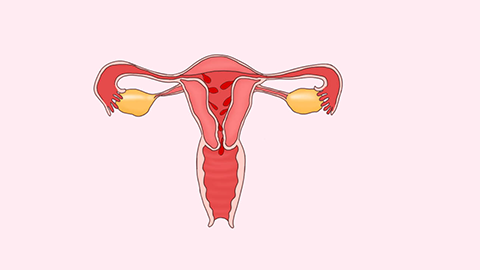What causes endometriosis?
Generally, the main causes of endometriosis include retrograde menstruation, genetic factors, pelvic adhesions, endometritis, and adenomyosis. If discomfort symptoms occur, it is recommended to seek timely treatment at a regular hospital. Detailed analysis is as follows:
1. Retrograde Menstruation
During menstruation, uterine contractions may cause some menstrual blood to flow backward into the fallopian tubes and pelvic cavity. Endometrial cells carried by the retrograde menstrual flow can implant and grow within the pelvis, forming ectopic lesions. Strenuous exercise and excessive fatigue should be avoided during menstruation to reduce the probability of retrograde menstruation. Keeping warm is also important to prevent pelvic blood vessel constriction, which may impair menstrual blood discharge.
2. Genetic Factors
Women with a family history of endometriosis may have a genetic predisposition for abnormal implantation of endometrial cells, thereby having a higher risk of developing the condition. These women should start regular gynecological examinations earlier, such as pelvic ultrasound, to enable early detection and early intervention.

3. Pelvic Adhesions
Pelvic adhesions caused by pelvic inflammation or post-surgical complications can obstruct the normal discharge of menstrual blood, increasing the likelihood of retrograde menstruation and providing favorable conditions for endometrial cell implantation. Under a doctor's guidance, injection solutions such as chymotrypsin or hyaluronidase can be used to improve adhesions. If adhesions are severe, laparoscopic pelvic adhesion lysis may be required to restore normal pelvic anatomy.
4. Endometritis
Long-term chronic endometritis can damage the normal structure of the endometrium, making endometrial cells more prone to shedding and retrograde flow with menstrual blood, thus increasing the risk of ectopic implantation. Under medical guidance, medications such as cefixime capsules, metronidazole tablets, or levofloxacin hydrochloride tablets can be used to control inflammation and reduce abnormal shedding of endometrial cells.
5. Adenomyosis
Adenomyosis causes endometrial invasion into the myometrium and may be accompanied by the spread of endometrial cells into the pelvic cavity, inducing endometriosis. Patients with mild symptoms can use medications such as dydrogesterone tablets, levonorgestrel tablets, or gestrinone capsules under medical guidance to alleviate symptoms. Patients with severe symptoms may consider adenomyosis lesion resection to reduce lesion spread.
In daily life, attention should be paid to menstrual hygiene and frequent changing of sanitary products. Sexual activity during menstruation should be avoided to reduce the risk of infection. Maintaining a regular lifestyle and avoiding staying up late, along with a balanced diet with reduced intake of spicy and irritating foods, is recommended. Regular gynecological examinations should also be conducted to monitor pelvic health.










